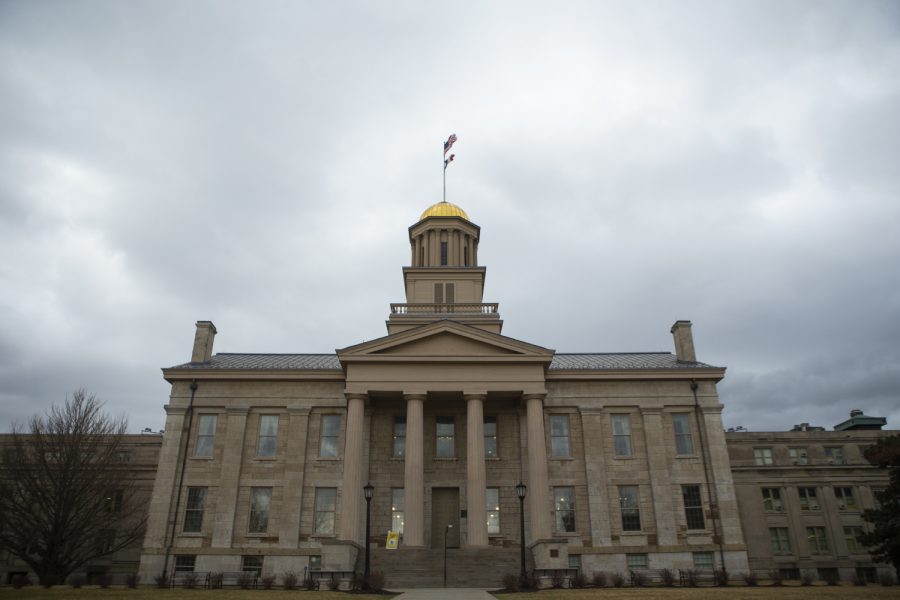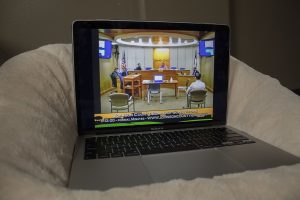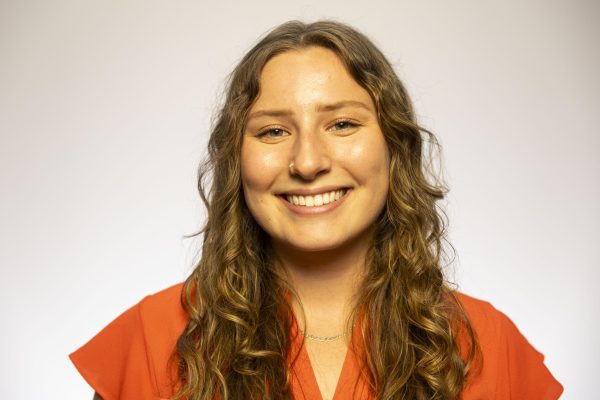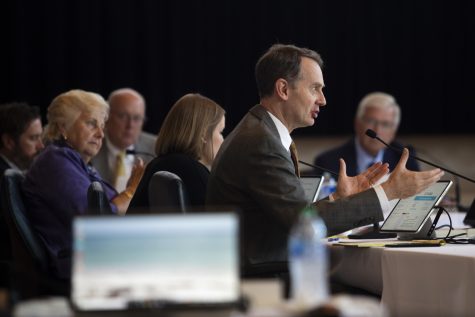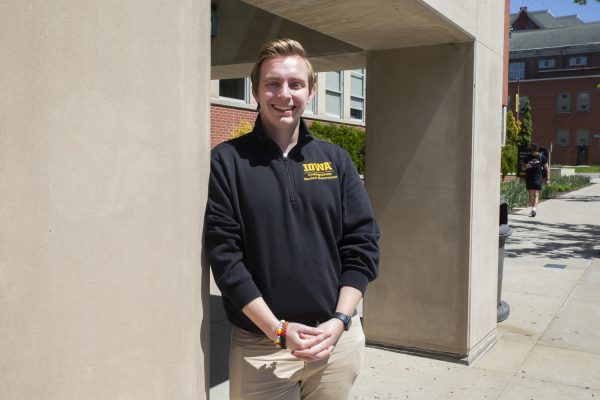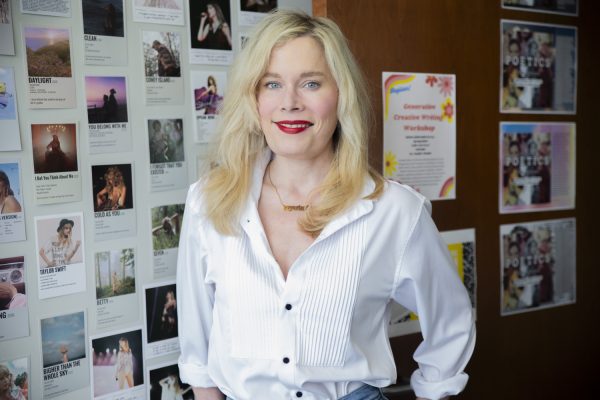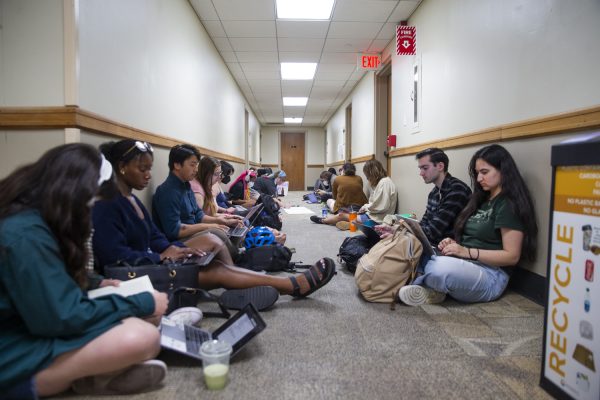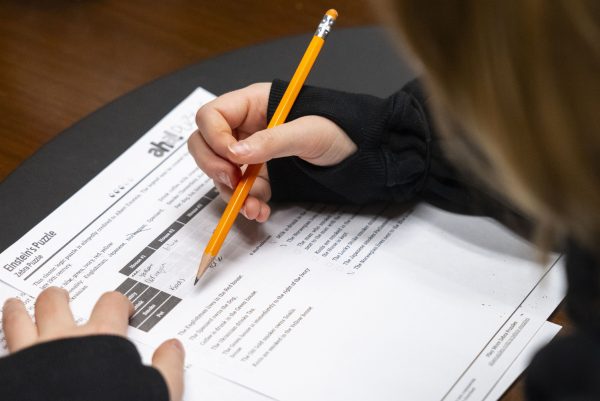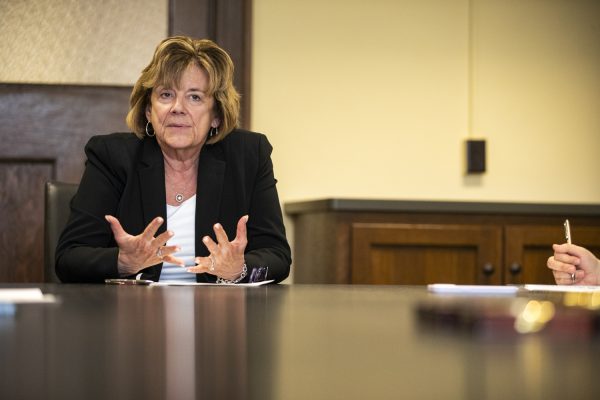Iowa regent universities report four-year decline in enrollment
The Iowa regent institutions reported an overall enrollment decrease of 4.4 percent for the 2020 academic year compared to fall 2019.
The Old Capitol is seen on Thursday, March 12, 2020.
November 18, 2020
Iowa’s public universities reported enrolling fewer students this year, the fourth year of decreasing enrollment since setting records in fall 2016 — more than half of which is caused by a decline in international student enrollment.
At Wednesday’s regents meeting, an enrollment report presented by Jason Pontius, the regents associate chief academic officer, showed that the overall enrollment in fall 2020 at the state universities decreased by 4.4 percent, a loss of 3,333 students.
According to the report, the downward enrollment was driven by fewer undergraduates in the freshman class as well as a drop in numbers of international students. The University of Iowa saw a decrease of 792 students, a 2.5 percent drop.
Research by the National Student Clearinghouse Research Center also shows a 4.4 percent drop in national fall 2020 enrollment data. In Iowa alone, enrollment for all undergraduate institutions — including private — had a 7.1 percent decline.
As previously reported by The Daily Iowan, the regents anticipated a decline in national enrollment that would impact Iowa’s universities. Over the past 25 years, Iowa’s public universities have had to increasingly rely on tuition dollars as a revenue source in lieu of state funding as appropriations are cut or don’t keep pace with rising costs.
Pontius said the decrease of students attending community college was another factor contributing to fewer enrollees, as transferring to the regents institutions for a 4-year university option is common. But, that was not a major factor at the UI.
“Iowa community college enrollment for this fall was down 6 percent,” he said. “Since 2016, 50 percent of the decline in enrollment is due to the drop in international student enrollment,” Pontius said.
Another factor into a decline of enrollment is a decrease in the rate of Iowa high school graduates attending college. In 2013, 69 percent of Iowa high school graduates went to college. Five years later, it dropped to 65 percent, Pontius said.
UI President Bruce Harreld highlighted a general decrease in Iowa high schoolers, a future population of potential college students.
“It basically suggests there’s going to be a decline in the audience, those that are potentially going to college,” Harreld said.
At a presentation for the Iowa City Noon Rotary Club on Nov. 12, Harreld said that there has been a significant reduction in the birth rate, which began to decline in 2007. He said that by 2026, higher education will see a significant constriction in the number of students available to attend college.
“The highest percentage of high school students attending higher ed appears to have now flattened in the United States,” Harreld said.
Harreld said during the rotary meeting that’s part of the reason public universities have had to look to other sources of funding, such as public/private partnership deals, to fill in gaps left by state or tuition dollars.
“The past few decades the state of Iowa’s overall budget has nearly doubled, and the consumer price index in the state increased by 62 percent. But support for the state of Iowa, for students attending our university is decreased by $8 million,” Harreld said. “In a world, continuing to reduce state funding, we’re left with very little to consider. Other than recruiting more and more students, growing market share, adding residence halls and classrooms, increasing the cost of tuition, and I’d argue, here we go. And all is exactly the opposite of what we need to do.”
Regent David Barker agreed that the regent universities are facing possible enrollment declines for the next decade because of demographic changes.
“The pandemic may have accelerated existing trends that will force us to adapt in order to compete successfully with other institutions,” he said.



